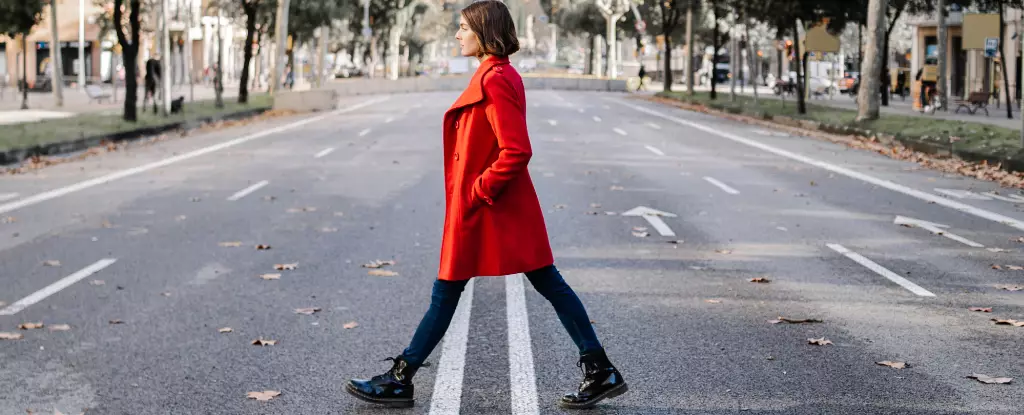History reveals that humanity has long been captivated by the promise of eternal youth and vitality, often falling prey to the allure of quick-fix solutions. From mystical potions to miracle pills, the marketplace has perpetuated a fervent desire for shortcuts to longevity. Yet, ancient wisdom echoes loud and clear: “Walking is man’s best medicine,” famously stated by Hippocrates over two millennia ago. Today, science is finally endorsing this age-old advice, unveiling critical insights into how simple, natural movement can be the cornerstone of a longer, healthier life.
Recent studies reveal compelling statistics that provide a refreshing perspective on well-being. Individuals who embrace a lifestyle involving at least 8,000 steps daily experience a dramatic reduction—almost 50%—in their risk of premature death compared to those leading a largely sedentary existence, clocking in fewer than 5,000 steps. Interestingly, the well-known benchmark of inserting a daily goal of 10,000 steps into our lives is not steeped in scientific evidence, but rather grew from clever marketing initiatives in 1960s Japan. The promotional campaign for a pedometer dubbed the “manpo-kei,” translating to “10,000 steps meter,” popularized an arbitrary number, leaving many of us chasing an ambiguous goal rather than anything grounded in research.
The Importance of Pace
As we delve deeper, an essential question arises: Does the way we walk matter as much as the quantity of steps? Increasingly, research is highlighting that pace can significantly influence health benefits. Brisk walking, specifically, has emerged as a potent ally in our quest for longevity. A study encompassing over 450,000 adults in the UK suggests that converting a leisurely 14-minute stroll into a swift seven-minute power walk can lead to a remarkable 14% reduction in heart disease risk. Moreover, adopting a brisk walking regimen during middle age can potentially knock off up to 16 years in biological age, as evidenced by genetic assessments. Activating this practice even later in life can provide staggering benefits, with inactive seniors gaining an impressive year of longevity simply from integrating ten minutes of brisk walking daily.
These findings pose a critical shift in how we perceive fitness and health predictors. Walking speed has proven to be an incredibly potent indicator of mortality risk, surpassing conventional markers like blood pressure and cholesterol levels. As health professionals reevaluate their assessments, the simple yet revealing question, “How fast do you walk compared to others?” could reshape interactions between patients and their doctors.
Limitations of Brisk Walking
However, it is crucial to remain balanced in our enthusiasm. Just as brisk walking unveils profound benefits for heart health and overall mortality risk, its implications for certain conditions—like cancer—remain less pronounced. While walking itself significantly reduces the risk of 13 different cancer types, the added intensity of brisk walking does not necessarily confer additional advantages. Moreover, even breaking up lengthy periods of sitting with gentle, light-intensity movement can yield benefits for our metabolism, underscoring the importance of varied activity in our routines.
The Mental Boost of a Simple Stroll
Beyond the physical domain, walking offers a myriad of cognitive benefits that are too often overlooked. Engaging in this fundamental movement has been shown to amplify brain activity, doubling the likelihood of spontaneous creative idea generation. Activities associated with memory and imaginative thought are intertwined with our body’s kinetic rhythms, revealing that the act of moving our bodies can actually enhance our cognitive capabilities. Many individuals instinctively harness this phenomenon, involving themselves in walks to solve quandaries or resurrect latent insights.
Importantly, the context in which we walk can deepen these benefits. Walking through nature—where sights and sounds invigorate the senses—can amplify both mental and physical health outcomes. Various “nature prescriptions” have increasingly been implemented in clinical circles, leveraging our natural urge to engage with the environment to promote increased physical activity and holistic health.
Shifting the Health Paradigm
In a world plagued by chronic conditions spurred by widespread physical inactivity, it is time for a systemic pivot in the way we address health. Estimates show that 3.9 million premature deaths could be circumvented by prioritizing increased movement in our daily lives. Instead of focusing solely on treatment through pharmaceuticals, a reallocation of healthcare resources towards public health initiatives can foster opportunities for walking, thereby engendering healthier communities. Considering the exorbitant costs associated with new drug development, more funding for physical activity initiatives could provoke a notable decline in chronic diseases and enhance the overall quality of life for millions.
The time has come to recognize that the path to longevity and wellness may lie not in the latest trend or miraculous vitamin supplement, but in the rhythmic motion of our feet. The journey toward a longer, healthier life could be as simple as stepping outside, breathing in the fresh air, and taking that first stride toward vitality.


Leave a Reply